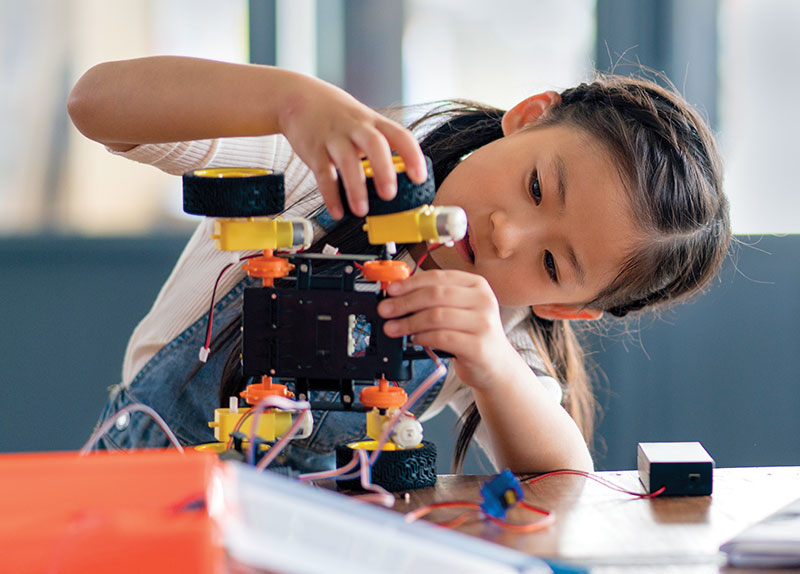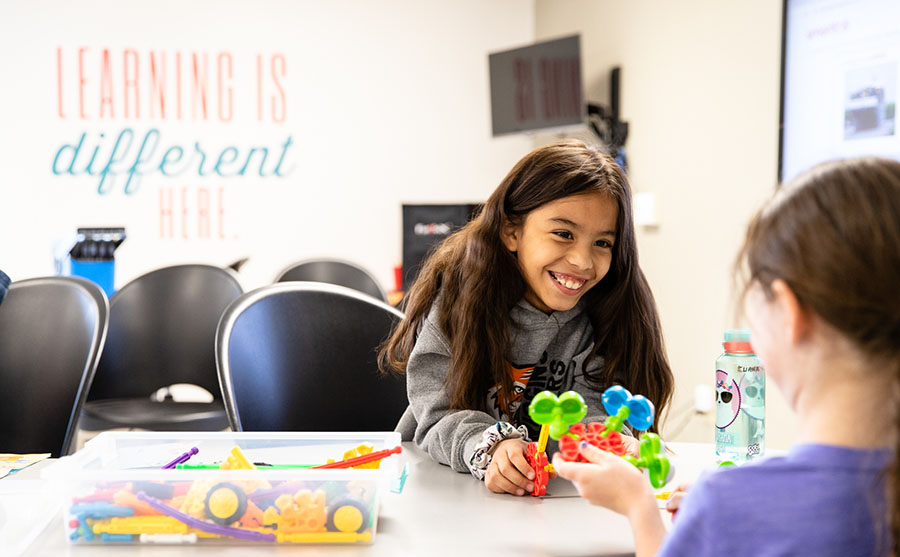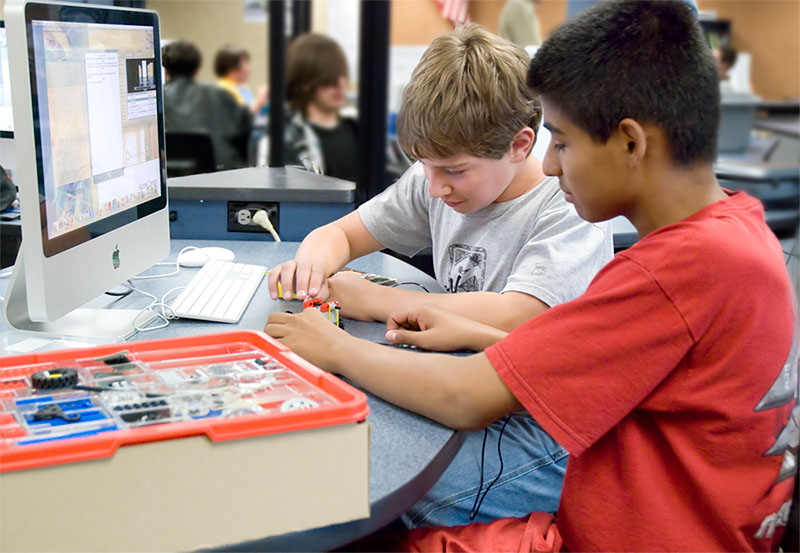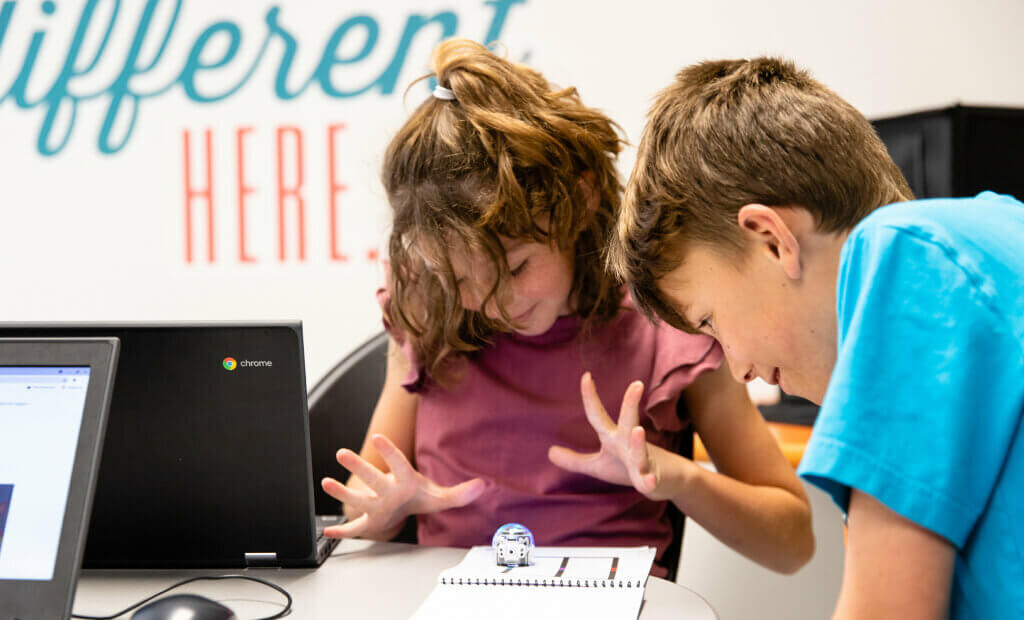Project-Based Learning Benefits [Research-Based]
While the roots of project-based learning can be traced back to the late 19th century— and American educational philosopher John Dewey—this experiential form of learning has existed since the beginnings of humankind. Researchers and educational reformers have only begun to study it in earnest in the past few decades, as efforts have increasingly been made to identify instructional methods that serve the broadest possible range of learners.
Here, we look at what some of the research tells us about the effectiveness of hands-on learning in pre-K–12 classrooms.
Project-Based Learning Overview
Project-based learning (PBL) is an instructional approach that offers students the chance to acquire knowledge and skills by actively engaging in projects that simulate real-world challenges and problems. This approach emphasizes learning through hands-on experiences; as such, it is often referred to as “learning by doing,” “experiential learning,” or “discovery learning.”
PBL is used in classrooms from preschool to 12th grade and manifests in many different types of projects. Examples of PBL include classroom debates, field trips, mock trials, community service projects, and much more—the possibilities are nearly endless.
12 project-based learning engagements to start using today >>
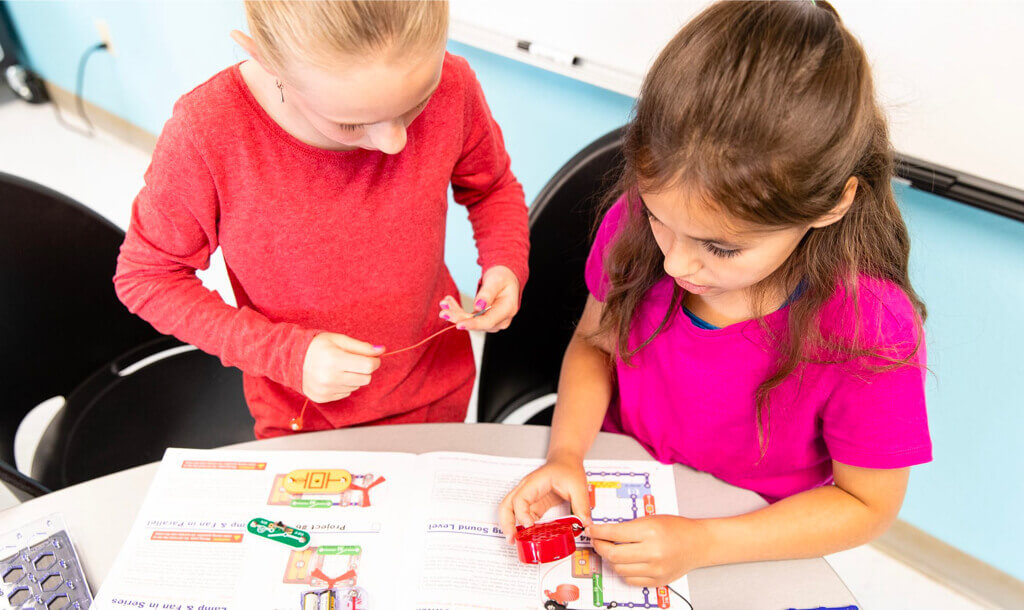
Is PBL Effective? What Research Reveals
The philosophy behind PBL is that it reflects the project-based nature of our daily tasks and careers. Rather than simply memorizing content or completing rote assignments, PBL empowers learners to break down problems and work with diverse stakeholders to implement effective solutions. Though most young learners who engage in PBL are years away from their first career, hands-on engagements that connect to real-world challenges can help them build skills like self-sufficiency, creativity, and critical thinking—all endlessly applicable to the working world.
Though research is ongoing, multiple studies have found PBL to effectively promote student learning in social studies, science, math, and literacy. Research from the Buck Institute for Education suggests that PBL is a valid instructional method for all students, but particularly those who face educational disparities such as language barriers, learning difficulties, or limited access to educational resources.
For example, in a series of studies conducted by Lucas Education Research in 2021, researchers found that PBL had a significant effect on improving learning equity. These findings were particularly timely, since the COVID-19 pandemic had revealed vast inequities in American public schools, evident in learning loss, lower student engagement, stalled progress, and other indicators of student performance. The studies found that schools that implemented PBL — many with the aid of federal relief funds — experienced the following results:
- High school students who engaged in PBL in Advanced Placement (AP) courses outperformed students in traditional classrooms on AP exams, regardless of socioeconomic status.
- Students (including English language learners) in high-poverty, diverse middle schools who participated in PBL science programs performed better on multi-subject assessments than peers receiving traditional science instruction.
- Second-grade students in low-income, low performing schools made five to six more months of learning gains in social studies with PBL instruction and two to three more months of gains in informational reading for the year as compared to peers in non-PBL courses.
While further research is necessary to establish a causal relationship between PBL and student outcomes, the existing evidence supports PBL as a viable solution in improving educational equity and individual student outcomes.
How to Address Learning Loss

eBook: How to Address Learning Loss
Help students get excited about learning as they apply their knowledge to real-word scenarios.
Elements of Project-Based Learning
According to the Buck Institute, project-based learning engagements alway comprise seven essential elements:
- Centers around a big and open-ended question, challenge, or problem
- Follows an inquiry-based process that stimulates curiosity and generates questions
- Incorporates concepts or skills that students should already know
- Requires using 21st-century skills such as critical thinking, communication, collaboration, and creativity
- Builds student choice into the process
- Provides opportunities for feedback and revision
- Requires students to present their problems, research processes, methods, and results
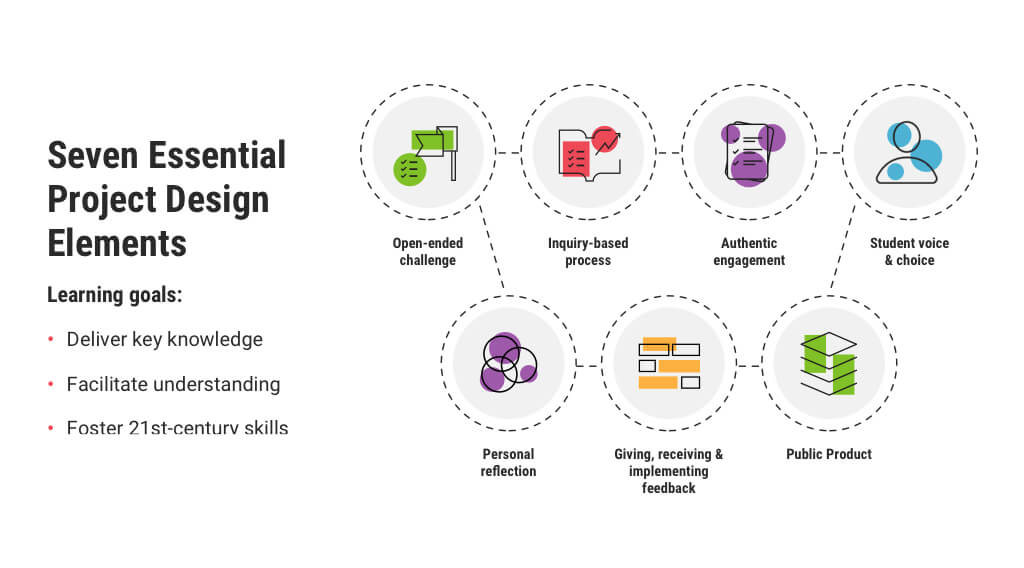
Of course, there can be many, many variations between different types of PBL engagements, and each element will manifest in unique ways depending on the classroom, subject, school, and age level.
Project-Based Learning Benefits
It is admittedly difficult to study the results of PBL, since implementation varies so widely. Nevertheless, there are numerous benefits made apparent through improved school performance, published research, and classroom observations.
Helps students build 21st-century skills: Project-based learning helps develop essential life skills such as teamwork, problem-solving, research gathering, time management, information synthesis, utilization of high-tech tools, personal and social responsibility, visualization, decision-making, and project management.
Teaches critical thinking: Arguably another essential life skill, PBL encourages students to think critically to solve complex problems and make informed decisions.
Connects students to the world beyond the classroom: PBL establishes connections between students’ learning experiences and the real world, bridging the gap between theory and practice.
Improves student attitudes toward education: Having the opportunity to apply their skills to tangible projects increases student engagement and enthusiasm for learning.
Builds motivation: By providing students with meaningful and relevant projects, PBL enhances their motivation to learn and explore new concepts and ideas—a skill they’ll carry with them for life.
Reinforces social and emotional learning (SEL): Along with building academic or “hard” skills, PBL supports the development of social and emotional skills such as collaboration, communication, empathy, and self-awareness.
Sparks creativity and curiosity: Through project-based learning, students are encouraged to think creatively, explore their interests, and pursue their curiosity, leading to a deeper level of engagement.
Supports in-depth understanding: PBL engagements encourage students to delve deeply into a subject, improving their odds of gaining and retaining a comprehensive understanding of the content.
Supports long-term retention: The hands-on nature of PBL promotes better retention of knowledge and skills as students apply what they have learned to real-world scenarios.
Empowers students: PBL supports students’ autonomy, fostering self-confidence, skills mastery, and a sense of purpose.
Encourages perseverance: Through overcoming challenges and obstacles during PBL engagements, students develop resilience, perseverance, and a growth mindset.
Allows for differentiation: The experiential nature of PBL accommodates diverse learning styles and abilities, allowing for individualized learning experiences and tailored instruction.
Promotes lifelong learning: PBL cultivates a passion for learning and equips students with the skills and mindset needed for lifelong curiosity beyond the classroom.

